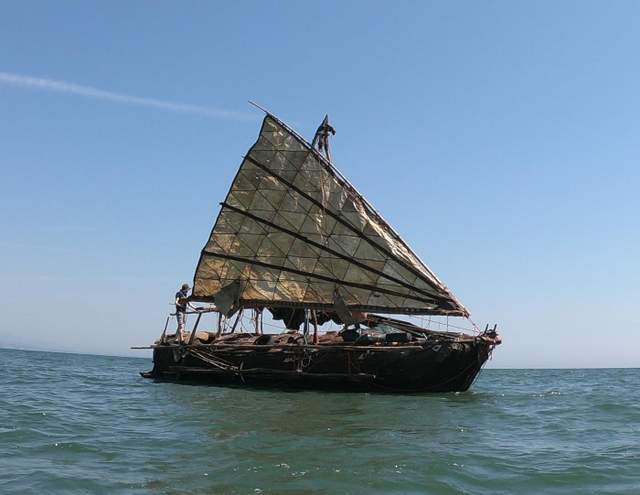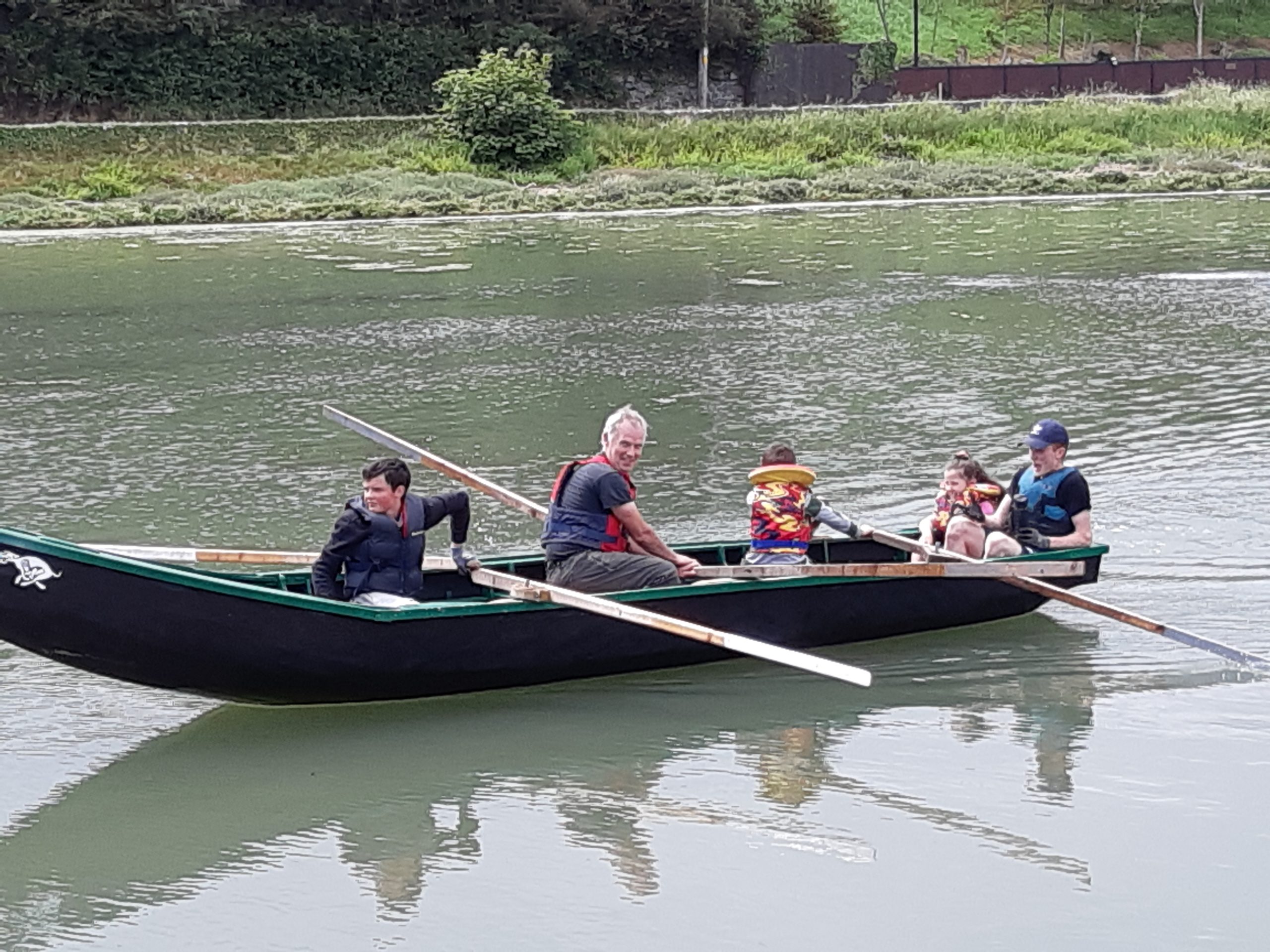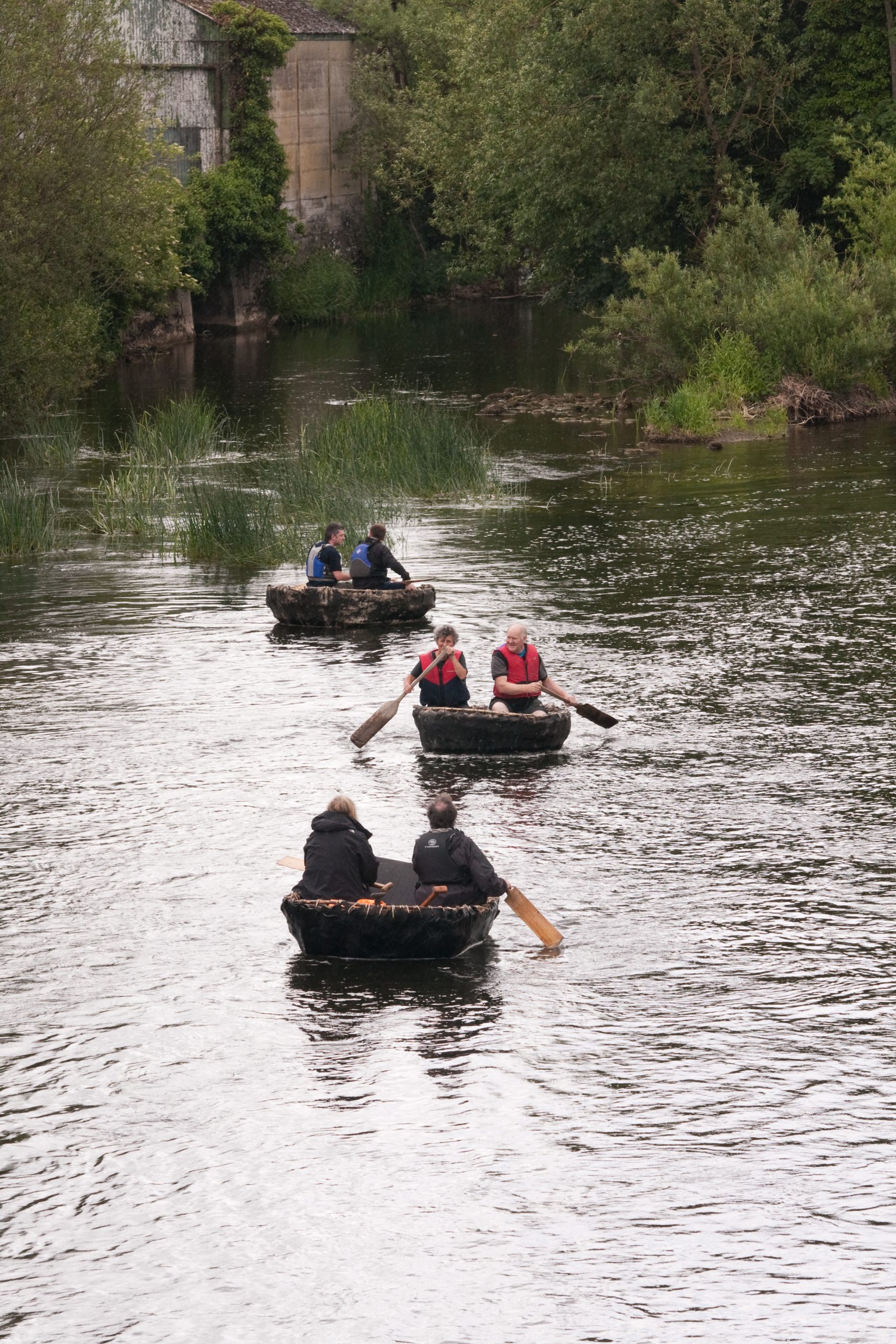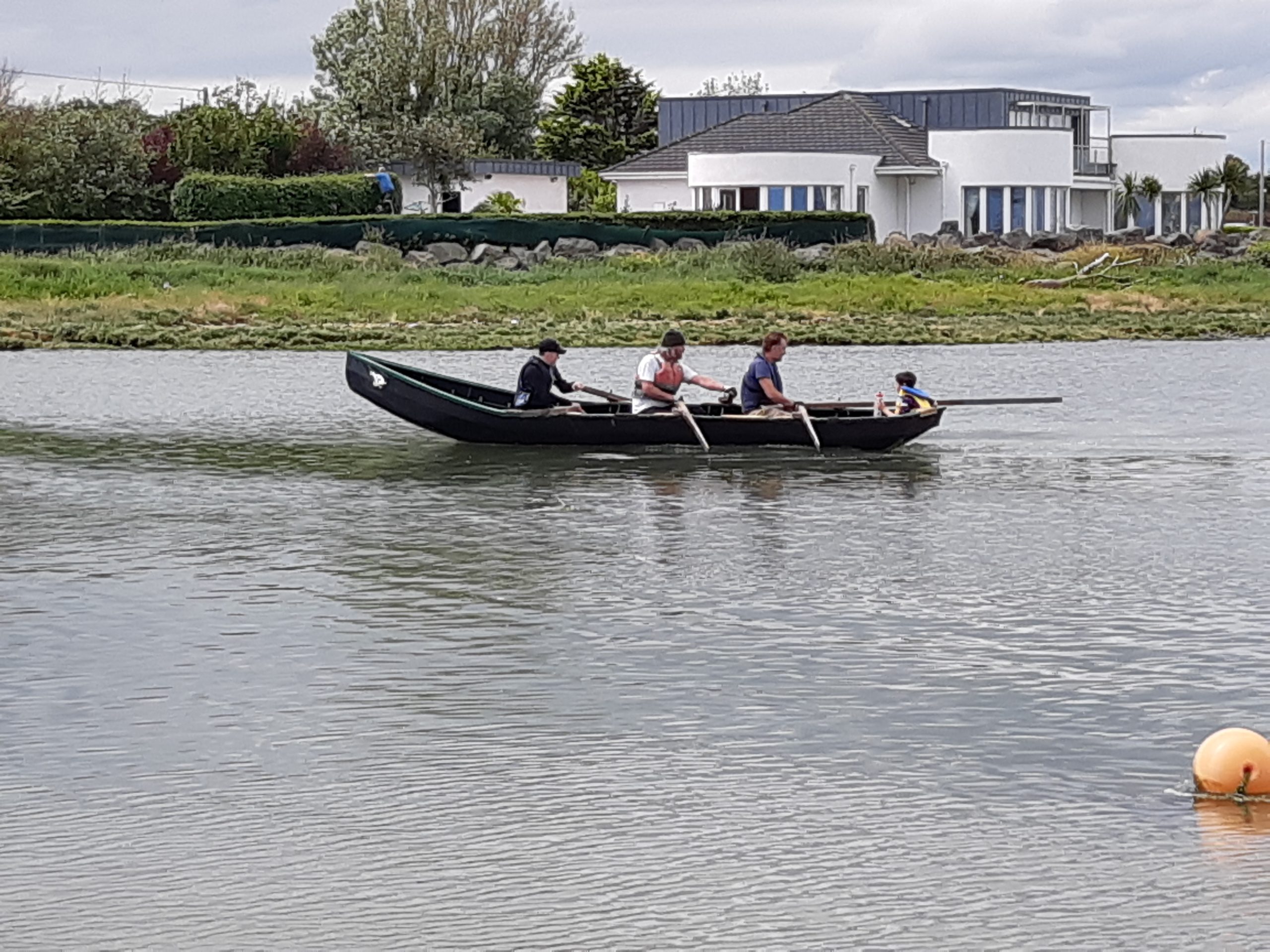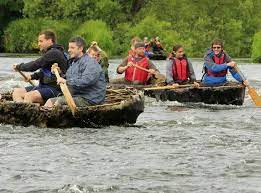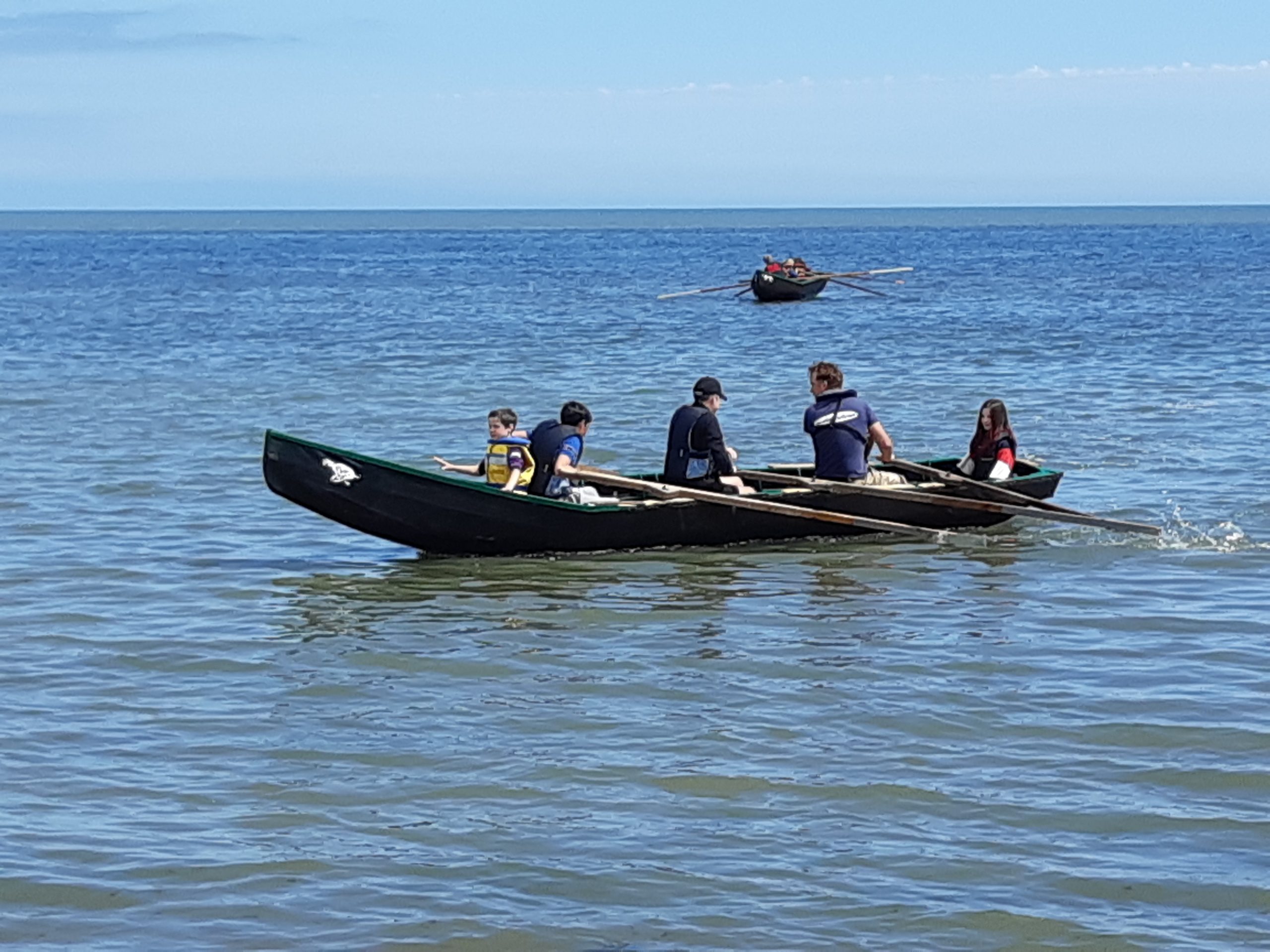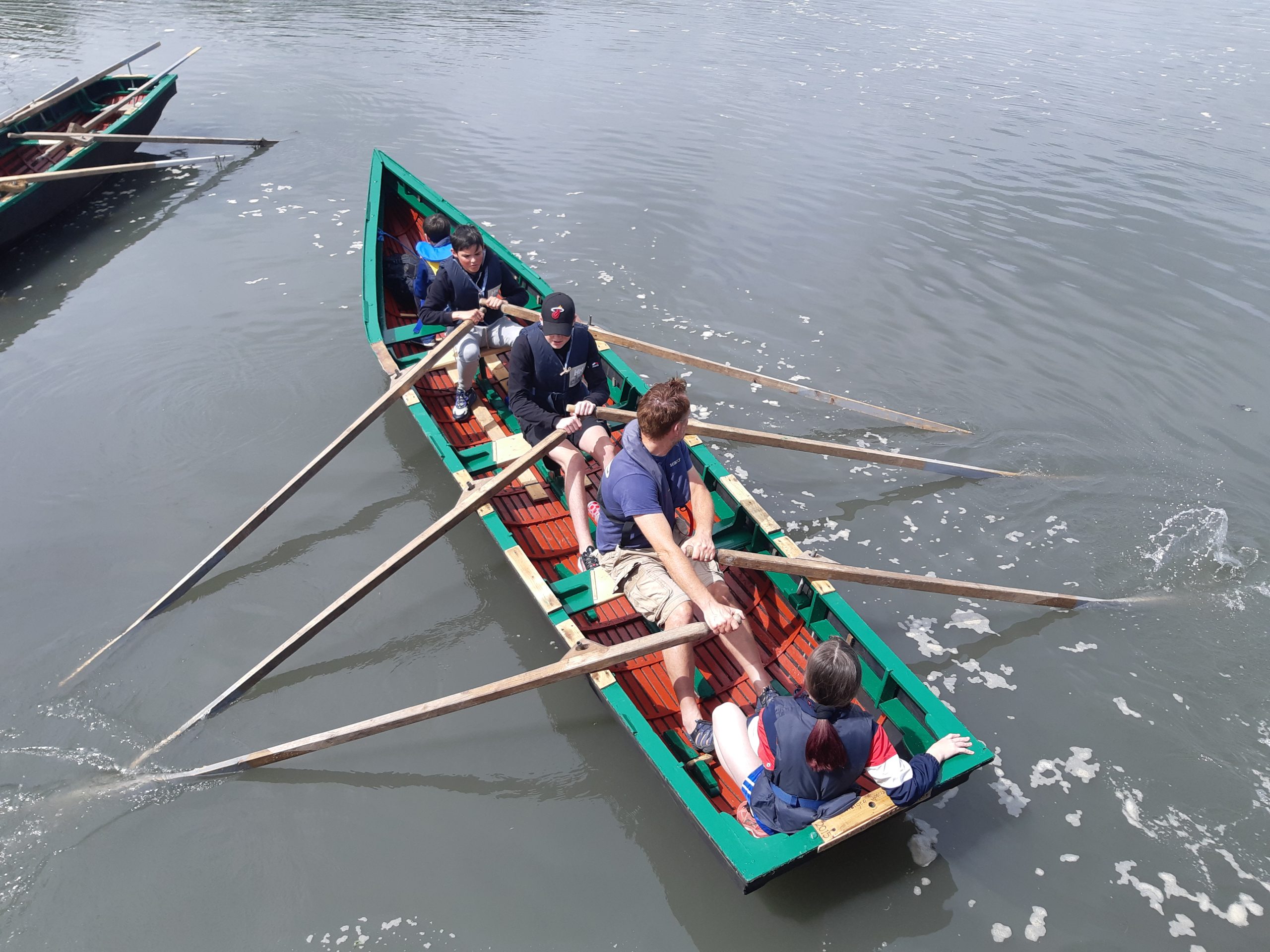Boyne Currachs on the River
As members of the Boyne Currach Heritage Group, we try to conform to the traditional methods and good cultural practice, with that of the local boat builders of our past, we aim to set a standard for the Boyne Currach, so that they are a safe and reliable craft as was in the past but that can undergo the tasks set to them in our present day.
As part of our efforts to revive this ancient tradition, the Boyne Currach Heritage Group collected many stories from local men and women who recalled their memories of these currachs being used in their daily lives, for transport and for an income from fishing. Today these Boyne Currachs are back on the river and are used purely for leisure. Long summer days are often spent meandering down different sections of this historical river, like in a time machine, transporting us through the centuries as we scull along, marvelling at the man-made objects and the natural beauties of our glorious riverscape.
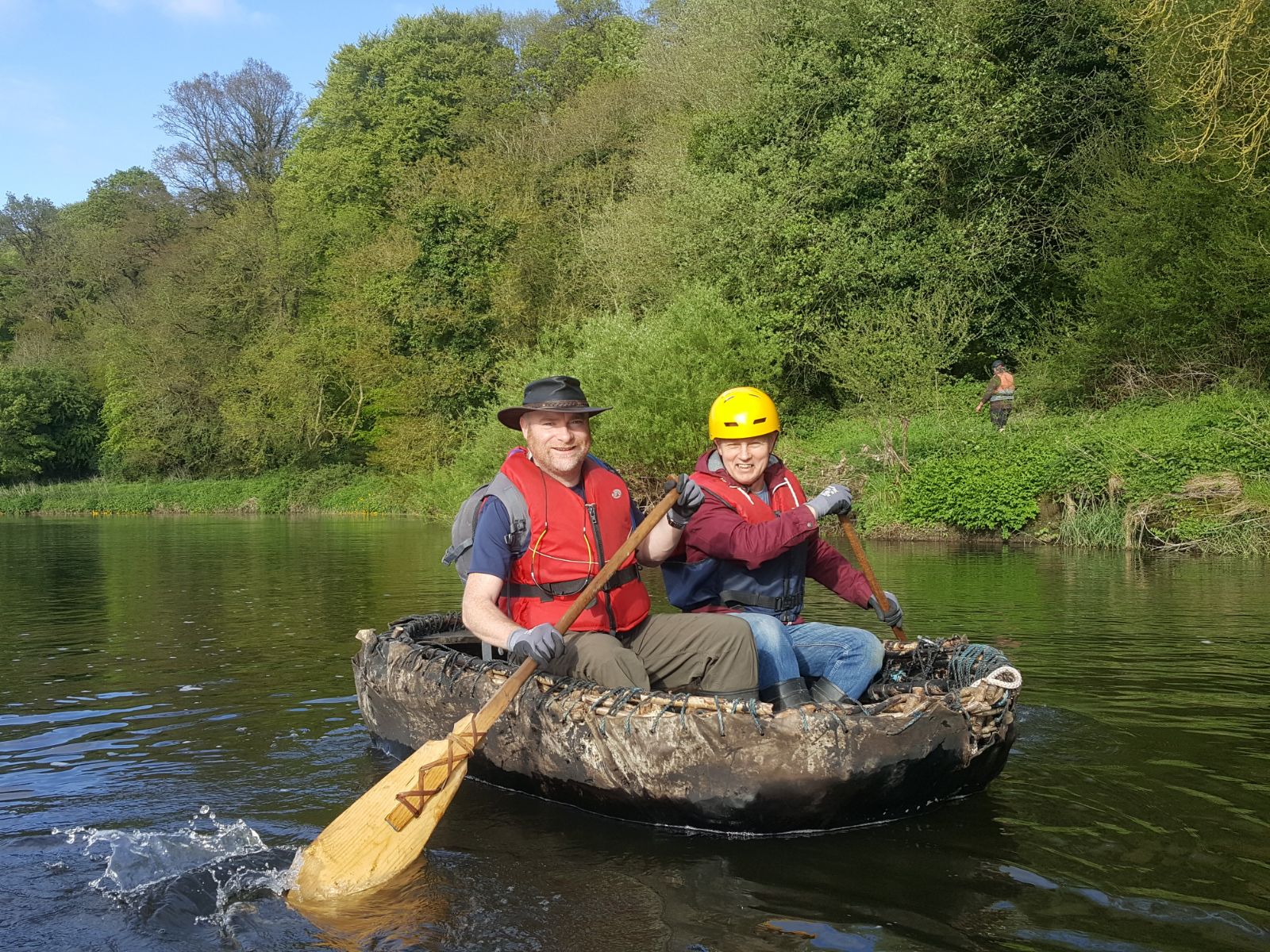
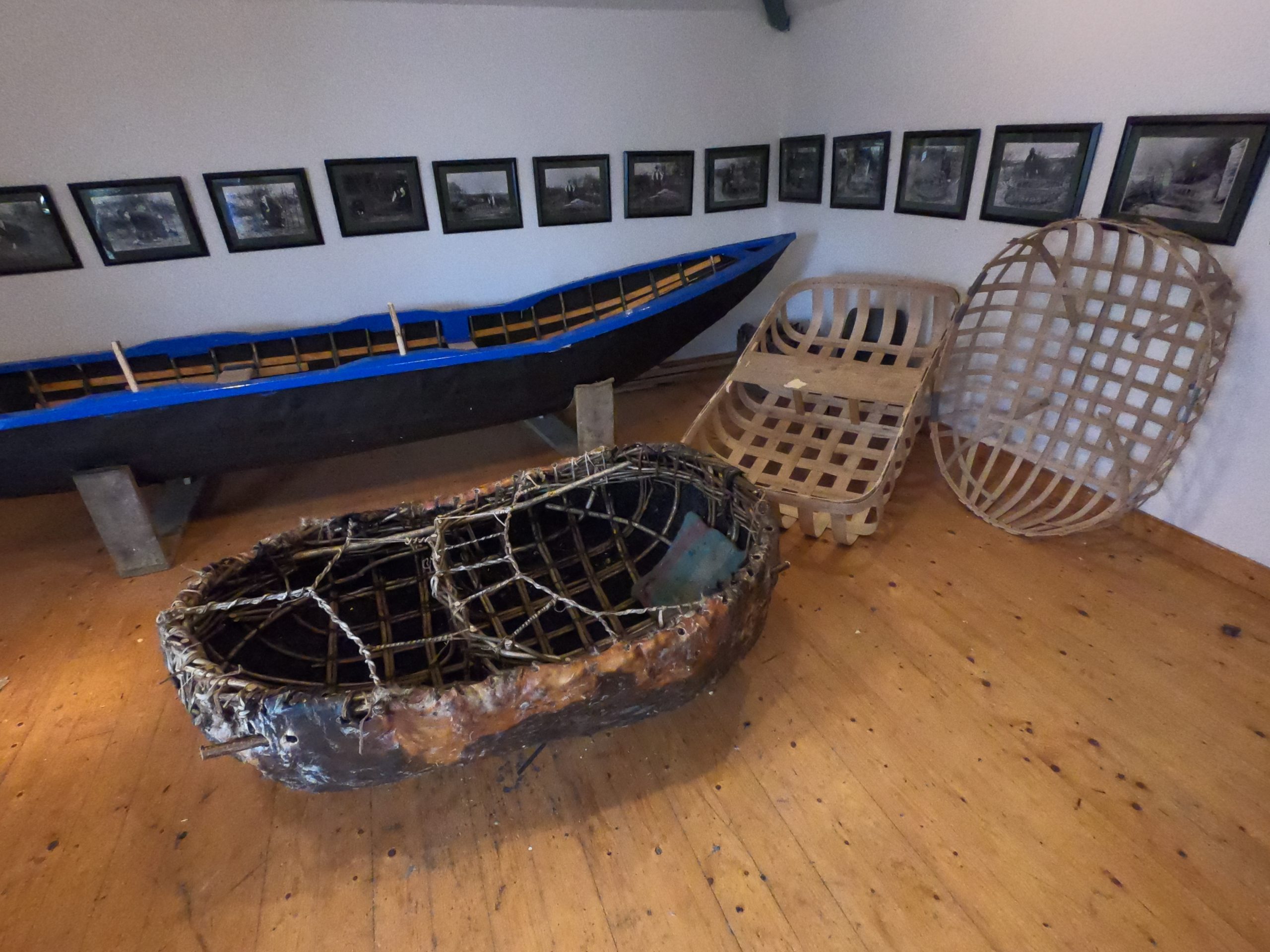
Boyne Currach Centre
It is surmised that the Boyne Currach is the closest relation to the original sea currach that being the Currach Dhá Éadan, which was used out at sea and from which the Bunbeg, and perhaps Boyne Currach evolved. The Boyne Currachs also take part in what is becoming a regular gathering of currachs at between Omeath and Warrenpoint. Six currachs are kept, maintained and displayed at the Boyne Currach Centre, on the opposite side of the river to the monument of Newgrange, by the Boyne Currach Heritage Group. They are also often displayed at various shows and festivals around the country to evoke an awareness among the public about the folk traditions of our Boyne Valley.
Understanding our Stone Age Ancestors
Claidhbh Ó Gibne has been building currachs yearly, for over 20 years, and has worked full time on expanding the method of making Boyne Currachs to better understand how our Stone Age ancestors successfully carried animals to our shore and transported 5 tonne stones from quarries further north.
